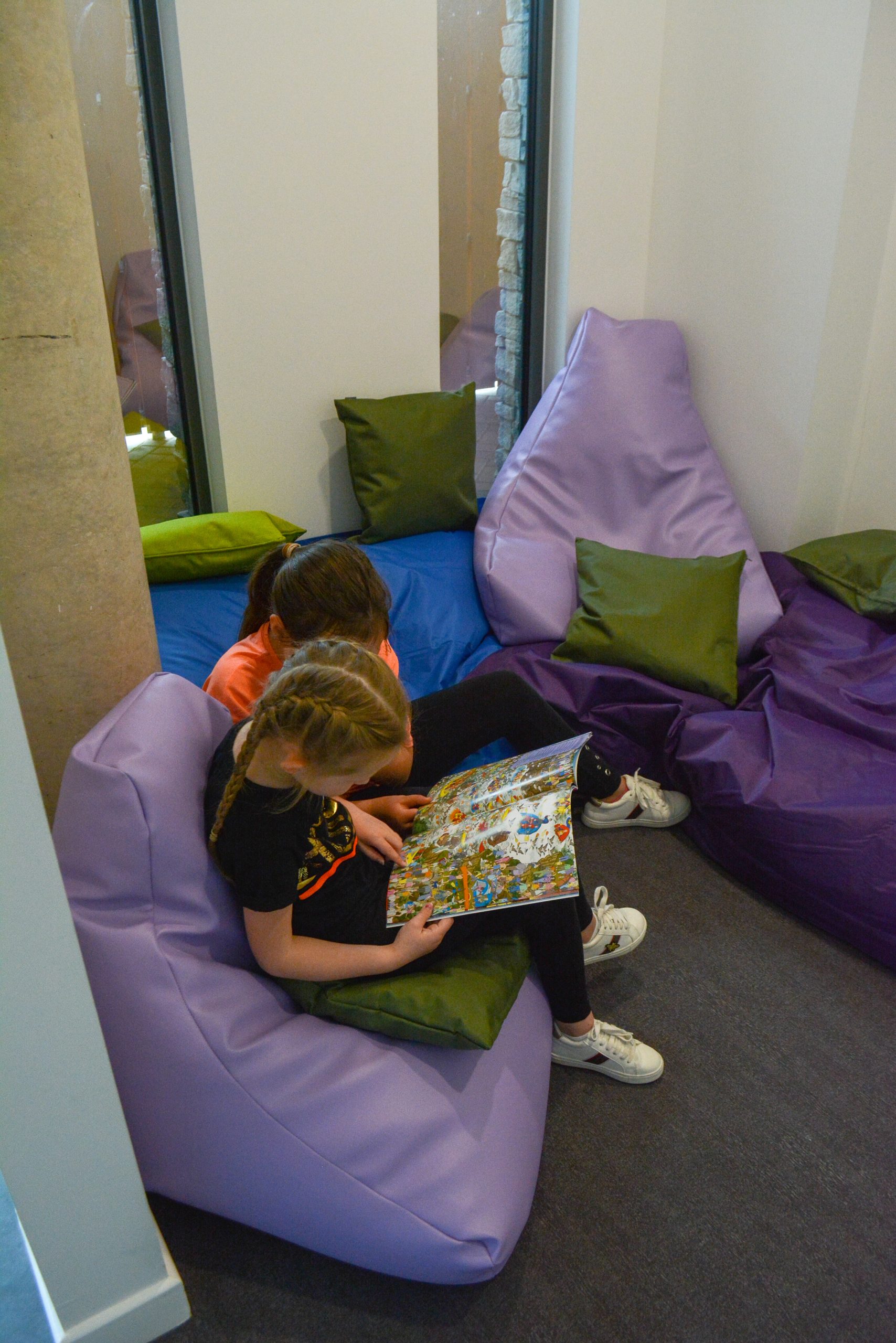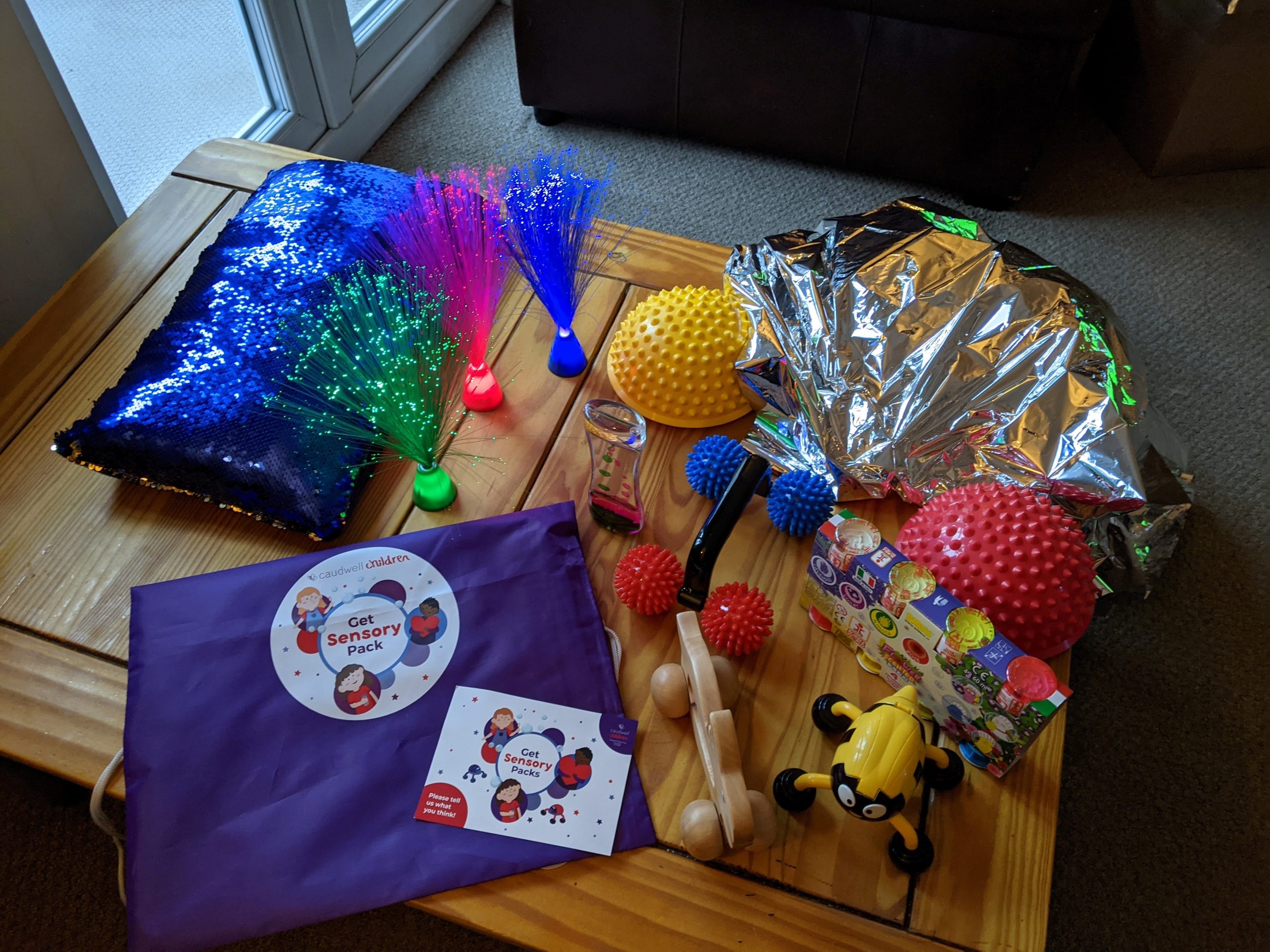Calming strategies are an important tool for any parent. Emotional regulation can be hard, so our Occupational Therapist, Manny, has put together five simple strategies for soothing disabled children.
Listen to calming music
This can be anything from nursery rhymes to white noise. Try different sounds and music and observe your child’s response. You can even try more unusual audio, like rainfall or the sound of a crackling fire.
If you find something that they like and makes them feel calm, save these on your phone so you can use them anywhere. Listening to favourite music or sounds can be done without anyone knowing. If your child is in a new overwhelming environment, using headphones and a phone may help your child work through the difficult situation discreetly.

Use sensory toys
Another calming strategy is to use sensory toys to stimulate your child’s five senses. Our Caudwell Children Get Sensory pack engages the child in sensory play and encourages development.
Exploring different senses can help your child reach a calm state, for example by rolling a massager on their back while they look at a colourful light. Watch the response from your child as some objects could make them over-alert. Sensory toys are something you can adapt and add to as your child gets older, they will learn which objects they like and how they make them feel. Eventually this can lead to more independence as they can access the toys themselves when they require them.
Read a book together
Reading a book in a quiet area of the house may help your child stay relaxed and focused. Make sure the space doesn’t have anything which could distract your child and turn off any television or radio.

Explore picture books, tactile books and even sound books to see how your child responds. Trying new things will help to keep them interested, you can also read their favourite book if they prefer routine. You may find different books bring on different emotions. Books which cause excitement can be read during high energy activities, while soothing books can be read to calm down.
Set aside regular time for high energy activities
Some children need to get up and moving to meet their sensory needs. So get jumping, rolling or running! High energy activities can be done at home, on the way to or back from school, making them very flexible.
Helping your child meet their sensory needs means they won’t be over or under-stimulated, which can cause distress.
A calming activity of their choice is a good way to help children return to a more relaxed state once high energy activities are complete.
Create a ‘calming space’ in your house
Creating a calming space can help your child regulate their emotions. A calm space can be anything from a blanket fort to a spare room.

Fill the space up with soft tactile objects such as snuggly blankets, soft cushions, soothing lights and textured toys. Your child can enjoy this space to relax and interact with the items, or combine this with other activities like reading a book, listening to calm rhythmic music or explore calming sensory toys.
How will these calming strategies help my child?
Our Occupational Therapist, Manny, explains the science behind the activities:
“Sensory processing is the ability to understand and organise sensory stimulation for function. As we interpret sensory stimulation from within our body, such as our bearings and temperature, our nervous system needs to deliver the correct amount of this stimulation for our brain to organise and understand.”
“At the same time we also need to interpret external stimulation which is everything happening around us. Understanding all this information in our brains lets us to perform everyday functions. If there are too many sensory elements around a child, they will find it difficult to interpret everything or respond appropriately.
“That’s why you can try helping your child to explore different sensory elements or activities throughout their day, by using calming strategies. This will help them to do it in their own time in a way that they enjoy. As they get older they will become more aware of the different sensory inputs and how to deal with them.
“The five calming strategies can be done anywhere, calm spaces can be created in any room in the house, high energy activities can be done at home or outdoors. You can also mix the activities. For example, you can ask them if they would like to listen to a audio book instead of music or try making a ‘calm space’ which includes sensory toys.”
If you liked this post, check out our Facebook, Twitter and Instagram where we share similar content.
)

)
)
)
)